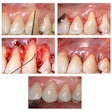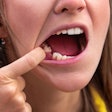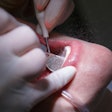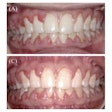
A new report from the Platform for Better Oral Health in Europe takes the European Union (EU) to task for not taking better care of its citizens' oral health.
Over half of the European population suffers from some form of periodontitis, with more than 10% having severe cases of the disease, the report found. Among Europeans ages 60 to 65, 70% to 85% have severe periodontitis. Oral cancer rates also are on the rise, the report noted.
"Trends in oral cancer are now showing an increasing incidence in women and young adults," the report noted. Some 132,000 cases of head and neck cancer in Europe in 2008 resulted in nearly 63,000 deaths.
The figures are daunting in light of healthcare budgets squeezed by recessions that several prominent EU nations are experiencing and austerity measures that some have turned to in an attempt to improve their economies. Karin Kadenback, a member of European Parliament, noted in the report that the 27 EU countries' spending on all aspects of care and treatment is close to 79 billion euros ($103 billion U.S.), and if the trends continue, this figure could be as high as 93 billion euros ($120 billion) in 2020.
An aging population that is keeping its natural teeth longer provides additional challenges, Kadenbach emphasized. In addition, the EU is seeing rising inequalities in terms of access to appropriate oral care, with low-income populations facing higher hurdles compared with high-income groups.
"It is somewhat surprising and regrettable that -- for years -- there has been no concerted effort at an EU level to bring dental public health to the attention of the European institutions, and to give policymakers a deeper understanding of what can and needs to be done about oral health in Europe," Kenneth Eaton, BDS, PhD, MSc, the chair of the Platform for Better Oral Health in Europe, wrote in the report's foreword.
The report, "The State of Oral Health in Europe," was commissioned by the Platform for Better Oral Health in Europe in anticipation of World Health Day on April 7, 2013. It was authored by Reena Patel, BDS, MSc, an international health researcher and practicing dentist.
"There is a distinct lack of policy emphasis placed on prevention," Dr. Patel wrote.
Consequently, prevention is a central element of the solutions proposed in the report, given the high cost of "traditional curative care" when it comes to oral health and the cost benefits of prevention.
A success story
The report highlights Denmark's model as a success story for treating oral health among children. Roughly 40 years ago, the oral health of Denmark's children was among the poorest in Europe. But by 1997, 99% of children had received oral healthcare every year thanks to their nationalized health plan. Today, every municipality is required to establish local clinics where care is provided free of charge, attendance is monitored, and prevention is tailored to the individual. The report recommends adopting a similar program of free basic coverage for children younger than age 18.
Fluoridation is seen as a piece of the puzzle, and water fluoridation programs exist in Ireland, Poland, Serbia, Spain, and the U.K. Fluoridated salt programs are in five countries, and fluoridated milk programs are in two countries.
Education also receives significant focus. The report urges school- and community-based prevention initiatives and the promotion of routine oral hygiene practices and oral health awareness. Other goals include the reduction of socioeconomic and environmental risk factors of chronic diseases, as well as improved access to care.
A significant portion of the report sheds light on the disparity across EU nations in access to care, healthcare coverage, and even the expectation for how often one should see a dentist. However, the different approaches can be used advantageously, Dr. Patel noted.
She compiled numerous "Good Practice" recommendations pulled from existing programs in different EU countries, including smoking cessation initiatives, improved labeling on certain foods, national preventive programs urging teens to get checkups from the dentist, and oral cancer screening for high-risk groups.
In particular, Dr. Patel calls for a coherent plan and the integration of oral health into national or community health programs. Underserved populations must be brought into the fold, and data collection is crucial to measuring whether their efforts are succeeding, she noted.
"A multistrategy approach is needed that considers further measures such as legislation, fiscal policy, and community development," she wrote. "This radical policy reorientation is principally the remit of national policymakers and professional organizations, and for this approach to be successful in achieving sustainable changes in oral health, multisector work is essential."



















